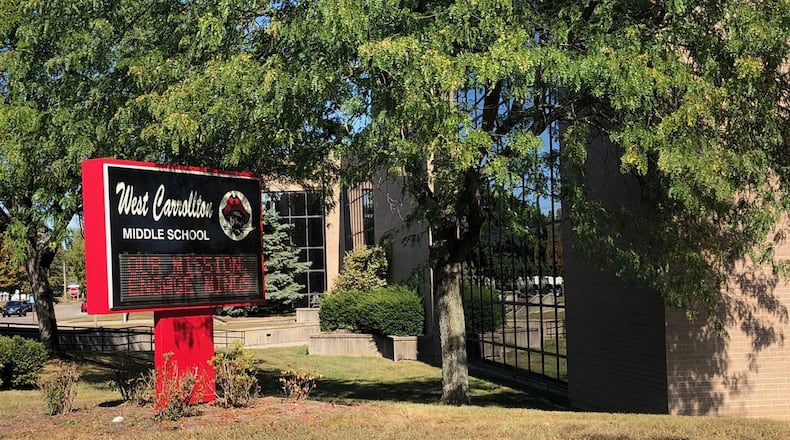EARLIER: West Carrollton plans bond issue for fall
“For us to be able to build these buildings at the cost that we’re getting – the money from the state vs. what the locally funded portion is – that’s a once-in-a-lifetime opportunity for this community,” Superintendent Andrea Townsend said Tuesday. “These buildings will be here for future Pirates into the 22nd century.”
Ohio Facilities Construction Commission documents show that the state would contribute over $92 million to the project. School district officials have said the total principal cost of the project is currently estimated at $124 million, with millions in interest payments on top of that.
West Carrollton schools Business Manager Jack Haag said the project would be done in phases, because of the way state funding would become available. Haag said if the bond issue passes, the district will use that local money to immediately plan and construct the preK-1 school and fifth-sixth grade school, with targeted opening dates of fall 2022.
Haag said West Carrollton is on the Ohio Facilities Construction Commission’s list for classroom facilities funding, and “our number will come up in 3-6 years” depending on how other projects currently in the pipeline progress. Once the state’s funding is released, the district would begin work on the grade 2-4 building and the grade 7-12 campus.
RELATED: West Carrollton closing a school in summer 2019
District officials said the phased approach would mean students would not be displaced during construction. The OFCC estimated that renovating West Carrollton’s schools would have cost more than 70% of the cost of new construction, so OFCC did not recommend that.
The bond issue would cost the owner of a $100,000 home an extra $196 per year. Those who qualify for the homestead exemption would pay less. The Montgomery County Auditor’s Office said the bond would produce $2.06 million per year, or $76.4 million over 37 years.
Haag said that money would pay for the local share of the project, plus interest payments over the life of the bond. District treasurer Ryan Slone said with interest rates at a 30-year low, timing for the project is good.
New schools do not automatically trigger better academic results, as Oakwood’s old schools and Dayton’s new ones attest. But West Carrollton officials say new school buildings would help the district in multiple ways, from safety upgrades, to air conditioning in all schools, to better technology and more modern, flexible learning spaces for students and teachers.
RELATED: School levies put focus on state funding fight
West Carrollton’s existing schools were built primarily in the 1950s and 1960s. At a time when many in the education world are focusing on early childhood efforts, district treasurer Ryan Slone said West Carrollton’s early childhood center is “miserable” for teachers and the youngest students in September and May without air conditioning, especially on the upper floor. Only two of the six schools the district uses are fully air conditioned.
Haag said in some of the district’s elementary schools, each classroom has doors opening directly outside, creating security challenges not present in more modern buildings. The existing schools also do not have fire suppression systems.
Townsend said the benefits of the project would go beyond the physical buildings, pointing to advantages of having all the students in each grade grouped together, and the ability of middle school students to take high school classes in a campus setting.
“With these grade bands, our kids get to grow up with their peers from the beginning,” she said. “It works better for teacher planning, small-group instruction, and we can differentiate the kids’ (lessons) based on needs.”
NEWS: SUV plows through wall at Riverside preschool
Recent school levies in Bellbrook, Beavercreek and other communities have drawn intense online debate, but social media discussion of West Carrollton’s bond issue has been quiet. Several residents argued the big state investment is too good to pass up, while a few worried the projected state aid would change.
School officials say the high school stadium and auditorium would remain in place. The future use of the Russell and Nicholas school sites would be up for evaluation, as would the future of the modified year-round schedule that Schnell Elementary uses.
Some parts of the project (locally funded initiatives, or LFIs) are not eligible for state funding. West Carrollton plans to use local money for a larger music room and larger gym spaces – five high school size gyms with wood floors among the four buildings. Another LFI will be extra square footage at the high school, including lab space, for STEM, robotics and engineering activities.
District officials said during the 2019-20 design phase, students and residents will be surveyed about color schemes and design aspects of each school.
About the Author

